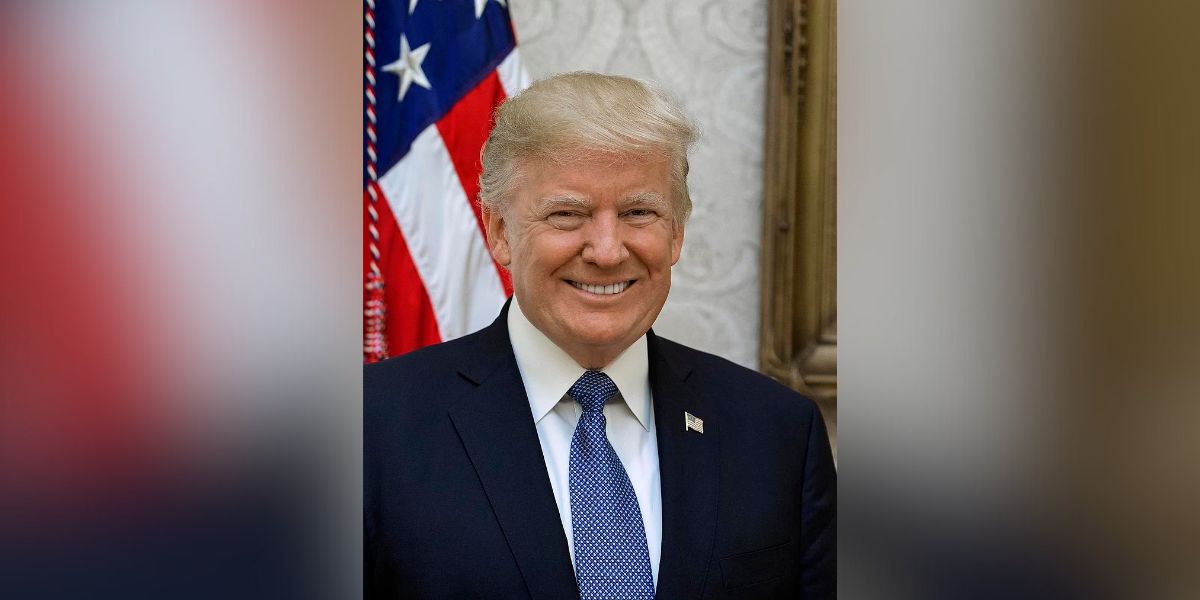The Trump administration has appealed to the US Court of Appeals for the Federal Circuit. The outcome of this appellate process — and a possible Supreme Court intervention will have significant implications for American businesses, consumers, and global trading partners.
Published May 31, 2025 | 9:34 AM ⚊ Updated May 31, 2025 | 9:34 AM

Donald Trump. (Creative Commons)
Synopsis: The USCIT ruled that President Trump’s tariff orders exceeded the authority granted by the IEEPA. The court emphasised that the IEEPA’s emergency powers are not a carte blanche for the President to impose tariffs for any reason, but are strictly limited to addressing specific, declared emergencies.
The recent decision by the United States Court of International Trade (USCIT) marks a pivotal moment in the ongoing debate over the limits of presidential authority in shaping trade policy.
The ruling, which found that President Donald Trump exceeded his statutory powers by imposing sweeping tariffs under the International Emergency Economic Powers Act (IEEPA), underscores the judiciary’s essential role in maintaining the constitutional balance between the executive and legislative branches.
The USCIT, a specialised federal court based in New York, is tasked with adjudicating civil cases arising from US customs and international trade laws. Its nine judges, appointed by the President and confirmed by the Senate, serve as arbiters when the boundaries of executive power and congressional intent are tested in the context of global commerce.
President Trump’s administration, invoking the IEEPA of 1977, imposed a series of tariffs on imports from China, Canada, Mexico, and other nations, arguing that these measures were necessary to address threats to US national security and economic interests.
These tariffs—sometimes as high as 145% on certain Chinese goods—were justified by the administration as essential for reviving domestic manufacturing and correcting trade imbalances. However, critics argued that the IEEPA was never intended to serve as a blanket authority for broad-based tariff regimes.
The legal challenge, brought by a coalition of small businesses and advocacy groups, questioned whether the President had met the statutory precondition of declaring a “national emergency” in response to an “unusual and extraordinary threat” as required under Section 202 of the IEEPA (50 U.S.C. § 1701). The plaintiffs contended that the administration’s justification failed to meet this high bar and that the tariffs were, in effect, an overreach of executive authority.
In a unanimous decision by a three-judge panel, the USCIT ruled that President Trump’s tariff orders exceeded the authority granted by the IEEPA. The court emphasised that the IEEPA’s emergency powers are not a carte blanche for the President to impose tariffs for any reason, but are strictly limited to addressing specific, declared emergencies that pose unusual and extraordinary threats to national security, foreign policy, or the economy.
“A tax deals with a budget deficit by raising revenue. A dam deals with flooding by holding back a river. But there is no such association between the act of imposing a tariff and the ‘unusual and extraordinary threat[s]’ that the Trafficking Orders purport to combat,” the court observed.
The court’s injunction ordered the repeal of four executive orders imposing the tariffs, while leaving in place certain sector-specific tariffs pending further review by the Commerce Department.
The ruling immediately injected uncertainty into US trade policy, as the Trump administration swiftly appealed to the US Court of Appeals for the Federal Circuit, which temporarily reinstated the tariffs pending further review. The outcome of this appellate process—and the possibility of Supreme Court intervention will have significant implications for American businesses, consumers, and global trading partners.
Beyond the immediate legal and economic consequences, the decision is a reaffirmation of the principle that the President’s powers, even in areas of national security and economic policy, are not unlimited. The US Constitution vests Congress with the authority to regulate commerce with foreign nations, and statutes like the IEEPA are carefully circumscribed to prevent executive overreach.
This episode is not merely a technical legal dispute; it is emblematic of broader tensions in democratic governance. The use of emergency powers to circumvent legislative checks has become a contentious issue in democracies worldwide. The USCIT’s ruling serves as a timely reminder that the rule of law requires clear statutory limits and robust judicial oversight, especially when executive actions have far-reaching consequences for the global economy.
Moreover, the decision may influence future administrations—both in the US and abroad—to exercise greater caution in invoking emergency powers for trade or economic measures. It also provides reassurance to trading partners and international markets that the US legal system remains committed to predictable, rules-based governance.
The USCIT’s decision to curb presidential tariff powers under the IEEPA is a landmark affirmation of constitutional checks and balances. As the legal process continues, the case will stand as a testament to the enduring importance of judicial review in upholding the separation of powers, safeguarding legislative intent, and ensuring that emergency powers are not wielded indiscriminately in the name of national interest.
The world will be watching closely as the next chapters of this legal saga unfold.
(The writer is a Senior Advocate. Views are personal. Edited by Majnu Babu).
